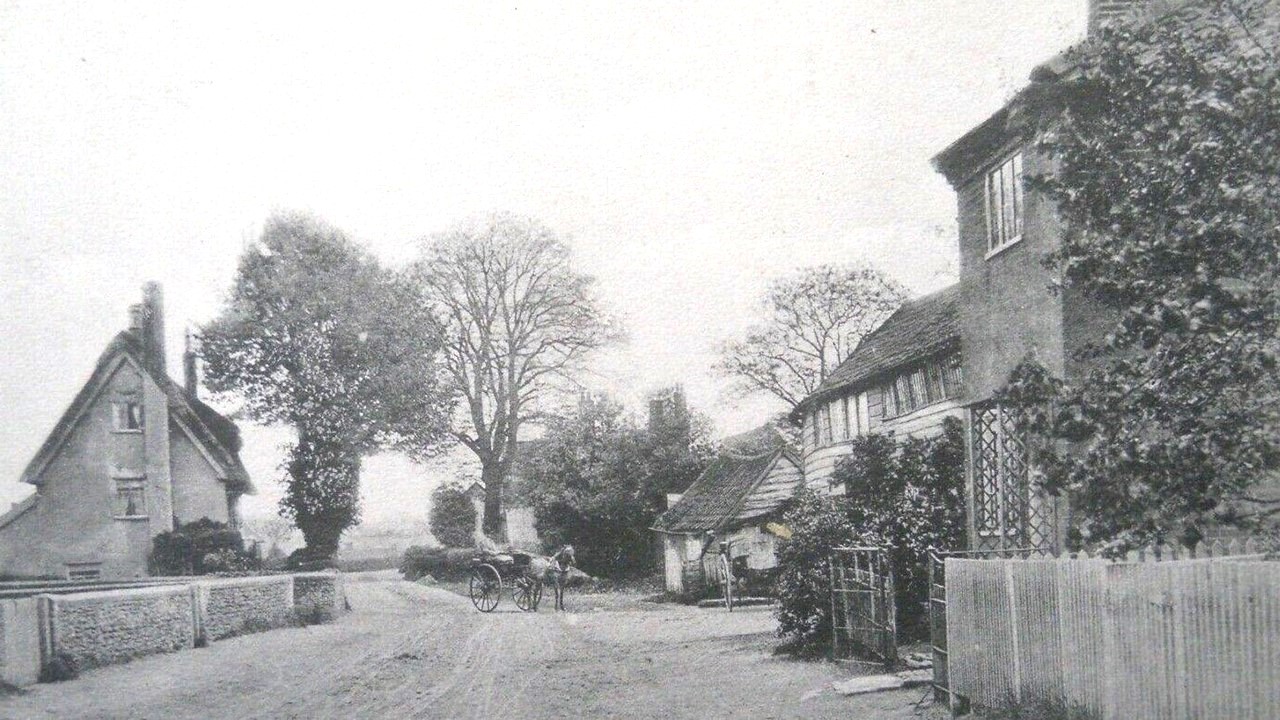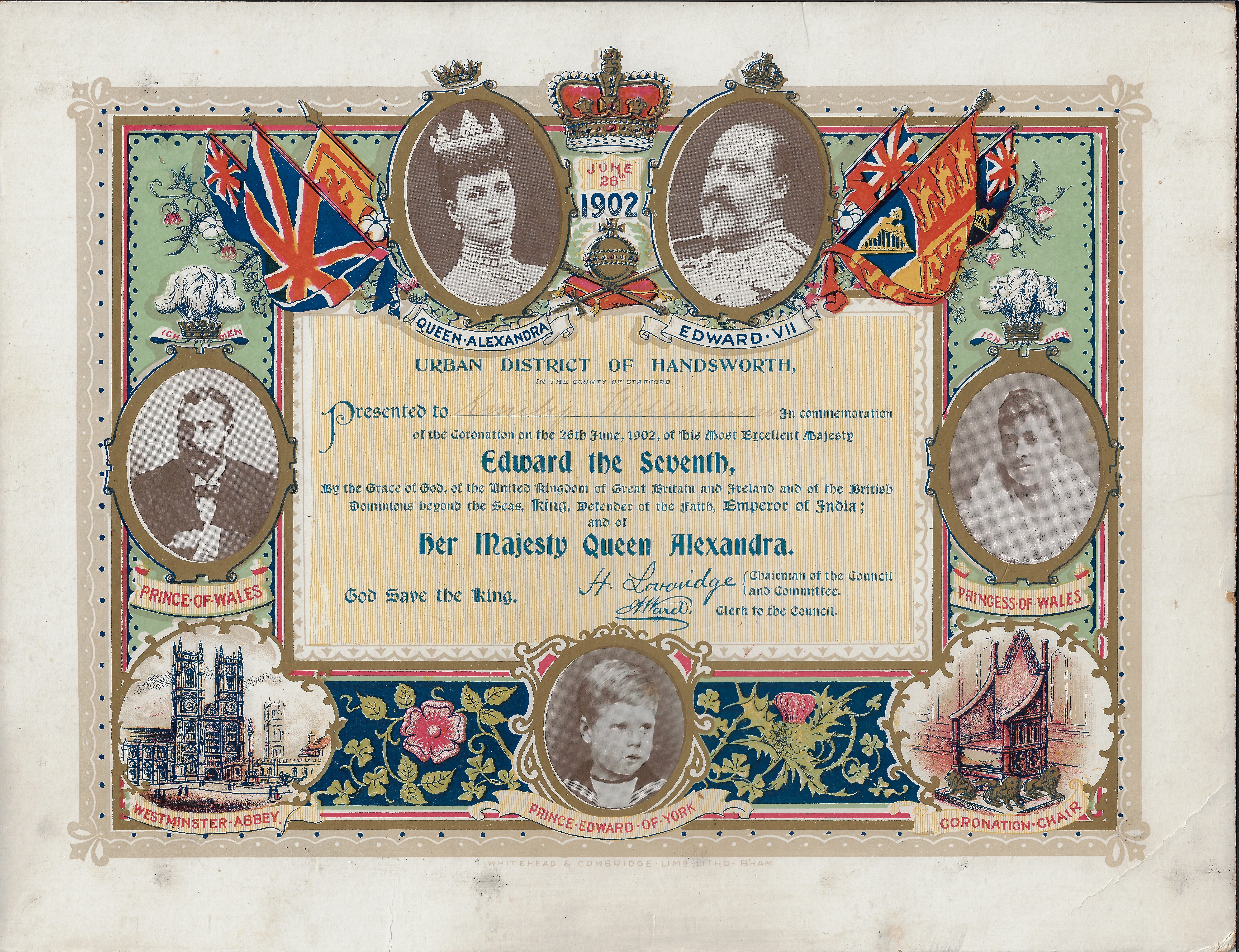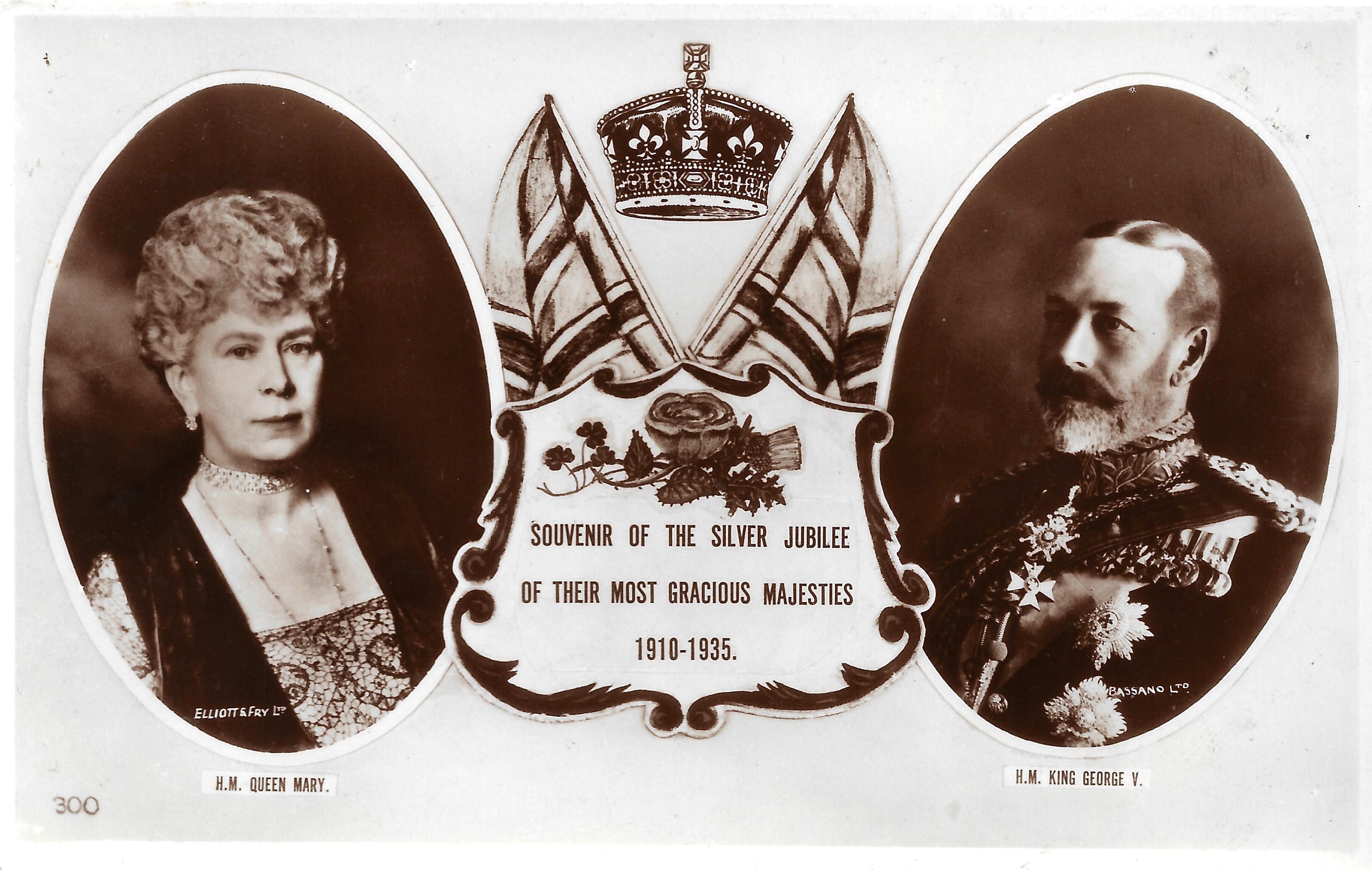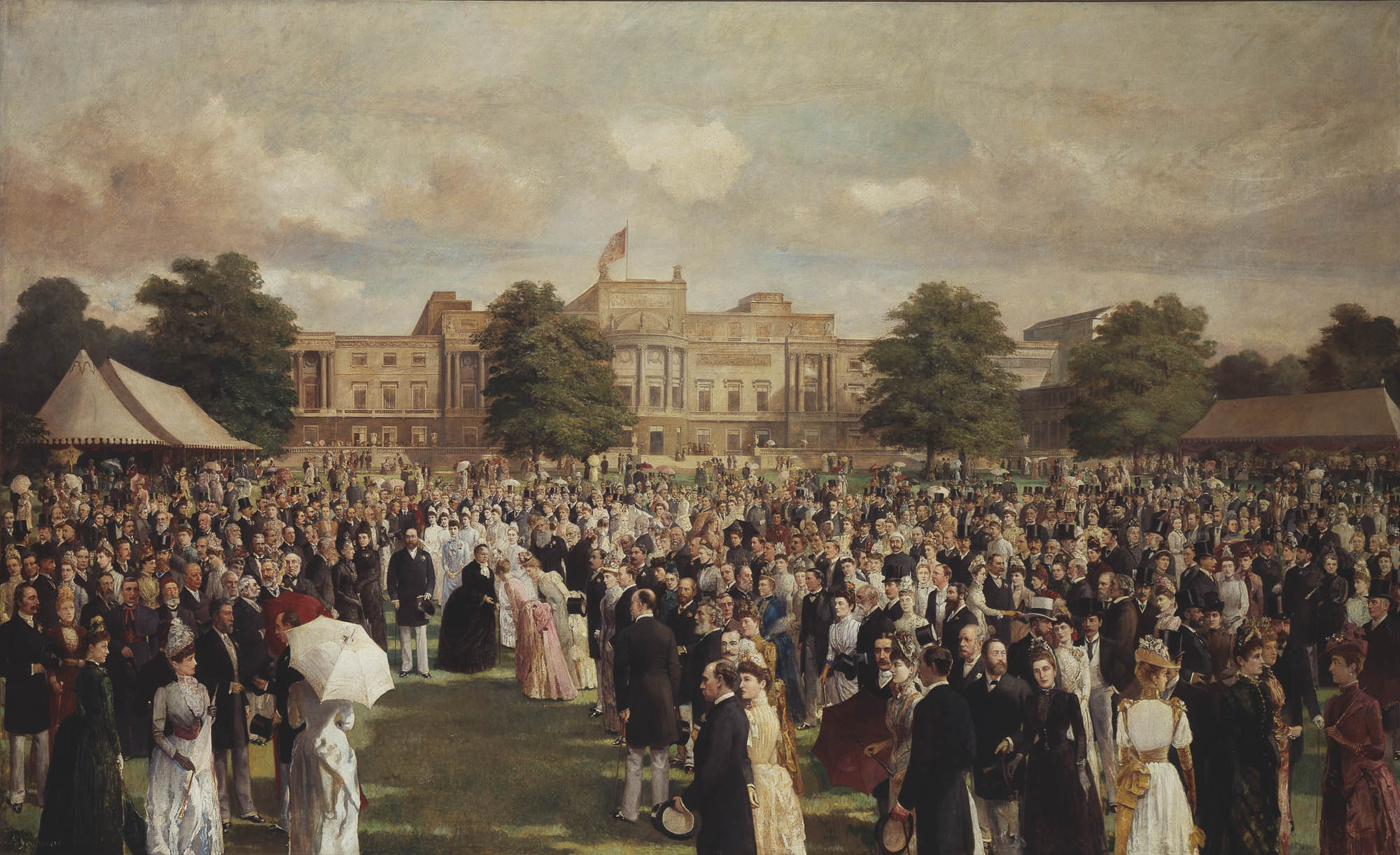- Screen Colours:
- Normal
- Black & Yellow
Our Jubilee History – Part I
Though the concept of the jubilee began in biblical times, today the term is most closely associated with the Royal Family and we tend to think of a Jubilee as celebrating a significant period in a monarch’s reign. Only a few British monarchs have achieved reigns of 50 years (Golden Jubilee) or more with the first to mark 50 years in a significant way being George III, followed by Queen Victoria in 1887.
The garden party at Buckingham Palace for Queen Victoria's Golden Jubilee, 1887 painted by Frederick Sargent. Downloaded by courtesy of the Royal Collection Trust. Queen Victoria, centre left, with the Prince of Wales (later King Edward VII), beside her.
These Jubilees were such significant events that if a road or hall were built during this time they were often named ‘Jubilee’, such as the Jubilee Hall in Aldeburgh.
In January 1887 C.J. Meadows, candidate for Westgate, Ipswich suggested a People’s Park be created to celebrate Jubilee year and that it be named Jubilee Park, now called Maple Park. From the Jubilee came the Jubilee Rovers (quoits team) and the Jubilee Rangers (football team). Sports trophies were named appropriately too, such as the Silver Jubilee Cup and the Diamond Jubilee Challenge Cup for Quoits.

A cart was named after the Jubilee and offered for sale in 1887 by Robinson and Sons, Benhall (workshop above on far right) coachbuilders since 1770s.
The Framlingham Weekly News reported on each village’s Jubilee rejoicings.
In Saxmundham the rich and poor met together at tables heavily laden with good old English fare in the main street. In Sweffling the celebrations were on a most liberal scale with volley firing, service at the church, feasting, sports, fireworks, a bonfire that made a “filled up happy day.” A new sixth treble bell was commissioned by Sweffling church, which was cast in London during Jubilee year and inscribed the Jubilee Bell.
And in Benhall:-
Will you name your child after the Jubilee? In February 1887 William John Jubilee Salter was born and in 1939 he was a farmer at Hill Farm, Saxmundham.
Ten years later, Queen Victoria's Diamond Jubilee (also known as the Great Jubilee) appears to have been marked in a very similar way per this image from Sweffling dated 22 June 1897.
From Sweffling Archive. Young man 2nd from left thought to be George Lewis Tye.
In Saxmundham there was a procession in the evening with decorated cycles and people in fancy dress costumes. Between 50 to 60 gathered in the main street. Once the town was paraded then they toured the villages of Kelsale and Benhall.
Souvenirs of the time included flags, mugs, coins, glasses, beakers, perfume bottles, plates and programs.
Jubilee souvenir mug part of a collection belonging to Sternfield resident.
In her journal, Queen Victoria called her Diamond Jubilee, “A never to be forgotten day.”
Our Jubilee History – Part II
Until Queen Elizabeth’s Sapphire Jubilee in 2017 (65 years), Queen Victoria had been the longest reigning UK monarch with her Golden and Diamond Jubilees. She died on the Isle of Wight in 1901 after 63 years reign and was succeeded by her son Edward VII, nicknamed "Bertie."
His coronation was on 9th August 1902. The commemoration certificate shown below courtesy of a Benhall resident states that the coronation was in June 1902, so not August then? Edward's coronation had originally been scheduled for 26th June however two days prior he was diagnosed with appendicitis. This was generally not treated operatively. Sir Frederick Treves, with the support of Lord Lister, performed a then-radical operation of draining the infected abscess through a small incision, one of the first appendix operations. Two weeks later when Edward VII was out of danger the coronation was re-arranged.

Edward VII was King of the United Kingdom and also Emporer of India. To mark the succession of an Emporer or Empress of India an imperial-style mass assembly, a Durbar, was held at Coronation Park in Delhi. It was held three times, in 1877 (for Queen Victoria), 1903 (for Edward VII), and after Edward VII died in 1910 the last Delhi Durbar was held for his successor, George V.
George V was Queen Elizabeth’s grandfather. His coronation was on 22nd June 1911, the image above showing the coronation procession arriving at the Abbey. He held his Imperial Durbar in Delhi on 12th December 1911 and the King and Queen travelled to India where they were presented to an assembled audience of Indian dignitaries and Princes.
Such a royal occasion required the security and presence of all the King’s troops in India therefore scores of men travelled from all over, some weeks in advance and marched, or if lucky travelled by train, to Delhi.
1911 Delhi Durbar with King George V and Queen Mary seated on the dais
Right: Rupert Montague Jacob, Adjutant 130th King George’s Own Baluchis (Jacob’s Rifles) and grandfather of Alice Jacob, Saxmundham, was present at the Delhi Durbar.
Left: Charles Maurice Baker born Sweffling in 1888 an RGA Gunner with 68th Company, was also present and was awarded the Kaiser-i-hind silver medal for his services. On a postcard to his parents he wrote, rather conservatively, “Glad to hear you are all well and had a good time at the coronation. This is all from your son Charles.”

George V’s Silver Jubilee was on 6th May 1935. In Sternfield the celebrations started with a Thanksgiving Service at the church and then at 3:30pm the grounds of Sternfield House, then known as “The Glebes”, were thrown open and about 200 parishioners sat down to a sumptuous meat tea. The health of his majesty was drunk and music was played from a loud speaker. There were sports such as putting golf and bowls as well as a silent movie on continuous play which had been made by local children. A bonfire ended the day of celebration.
